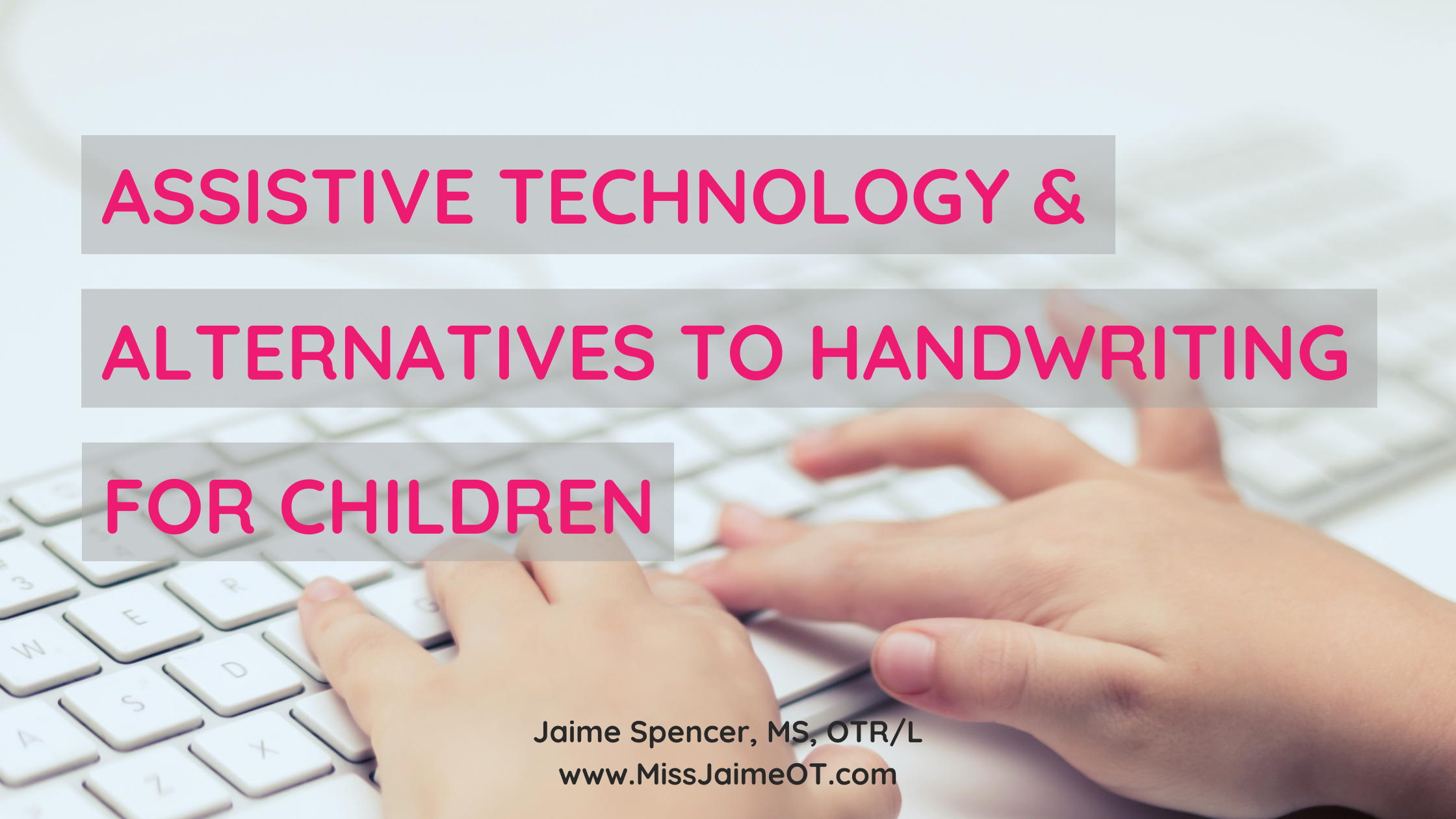
We are going to focus on assistive technology and alternatives to handwriting: what to do when handwriting simply isn’t an option.
Assistive Technology for Kids Who Struggle With Handwriting
Many children have physical, cognitive, motor, and other limitations that so significantly impact their ability to write that they require alternative means of written expression. In these cases, there are several options available. Presented in this article are several tools and strategies that could provide some success:
- Speech to Text Software/Apps
There has been good success with the free Dragon Anywhere app by Nuance Communications. This app records the student’s voices and translates their words into text for them. You can then cut and paste the words into an email or other document to be printed.
By far, this is one of the best apps found to help kids stay on track with work in the classroom. They do have to be fairly independent with navigation on the iPad to use it independently and functionally, but this is great to use with students who just can’t keep up on bell work and other assignments.
With this app, you simply take a photo of the worksheet or assignment and it allows you to place a cursor anywhere on the page to fill in the blanks, mark an X on your answer, etc. You can then save the page as a PDF and print it so that the child can review their work with his class quickly and easily. It’s fantastic and super easy to use.
This app is also free! There is also a Pro version of the app (SnapType Pro) that features filters and colored backgrounds.
- Word Prediction Software
This is another way for kids to get their words out more efficiently when handwriting just isn’t working. There are many programs out there, but WordQ has been used successfully with some students.
Word prediction software like WordQ helps kids type their responses and complete other written work on the computer more quickly by offering a dropdown box of suggested words after the student types the first letter or two of a word (predicting what they are going to type). For kids who have beginning keyboarding skills and adequate reading ability, this is another great solution.
For short answer or fill-in-the-blank assignments, it may be possible for students to use a label maker to type and print their answers to stick onto worksheets and papers. This works for short answer assignments like spelling or vocabulary tests. The student needs to have the ability to type their answer on the label maker keyboard and manipulate the labels to get them onto their paper.
- Voice Memo Apps
iPads and iPhones come equipped with a Voice Memo feature and this can be a good alternative method for students to record notes in class.
This is a low-tech option to help students participate in the basic task of writing their names. You can order a stamp customized with the student’s name on it so he can mark his name on worksheets or you could order several stamps with words that the student would need to write regularly in the classroom (days of the week, colors, etc.).
- Scribe
For some students who are able to verbalize their thoughts, but are unable to clearly produce written content on paper, a team at school might recommend using a scribe for written work. This is when the student verbalizes their response to an adult who then records their answer verbatim on the paper.
- Check out the awesome post from OTs With Apps and Technology about Adapting Worksheets for Students with Poor Handwriting Using Your iPad.


